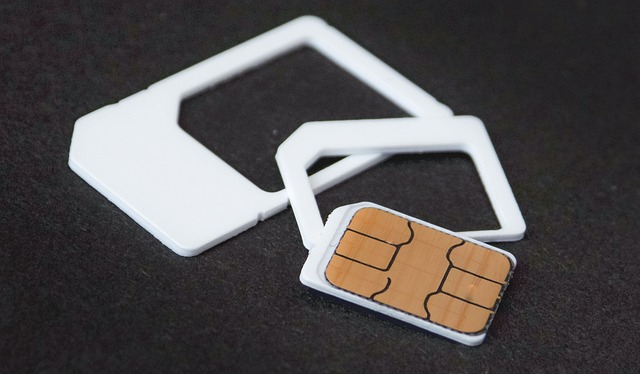How to Choose the Right Mobile Plan Without Overpaying?
Selecting a mobile plan can feel overwhelming with countless options available across carriers and providers. Many consumers end up paying more than necessary for features they rarely use, while others sacrifice coverage quality to save a few dollars. Understanding how to evaluate mobile plans based on your actual usage patterns, budget constraints, and network requirements is essential for making a smart decision. This guide walks you through the key factors to consider when comparing mobile plans, helping you find the right balance between cost and value without falling into common pricing traps.

Mobile plans have become increasingly complex, with carriers offering various combinations of data allowances, network speeds, contract terms, and additional perks. The challenge lies in identifying which features genuinely matter for your lifestyle and which are simply marketing tactics designed to increase your monthly bill. By focusing on your actual needs and understanding how pricing structures work, you can secure a plan that delivers reliable service without unnecessary expenses.
What Are the Best Mobile Plans for 2025?
The mobile landscape in 2025 continues to evolve with carriers competing on data allowances, network coverage, and pricing flexibility. Major providers like Verizon, AT&T, and T-Mobile offer tiered plans ranging from basic talk-and-text options to premium unlimited packages. Meanwhile, Mobile Virtual Network Operators such as Mint Mobile, Visible, Cricket Wireless, and Google Fi provide competitive alternatives by leasing network infrastructure from major carriers at reduced costs.
When evaluating plans, consider whether you need unlimited data or if a capped plan suits your usage. Many users overestimate their data consumption, paying for unlimited plans when 10-15GB monthly would suffice. Review your current usage through your carrier’s app or account portal to establish a baseline before shopping for new plans.
How Do You Compare Mobile Plan Prices Effectively?
Comparing mobile plan prices requires looking beyond the advertised monthly rate. Hidden fees, activation charges, device payment plans, and taxes can significantly increase your actual cost. Start by listing your must-have features: data amount, hotspot capability, international calling, or family plan discounts.
Create a comparison chart that includes the base price, additional fees, contract requirements, and any promotional rates that expire after a set period. Many carriers advertise low introductory rates that jump substantially after 12-24 months. Read the fine print carefully and calculate the total cost over the contract period rather than focusing solely on the monthly payment.
Consider network coverage in your area as well. A cheaper plan means little if you experience frequent dropped calls or slow data speeds in locations you visit regularly. Coverage maps from carriers provide general guidance, but user reviews and independent testing offer more reliable insights into real-world performance.
Which Carriers Offer the Cheapest Unlimited Mobile Plans?
Unlimited plans vary widely in price and actual performance. While marketed as unlimited, many plans throttle speeds after reaching certain data thresholds or deprioritize users during network congestion. Understanding these limitations helps you assess true value.
| Provider | Plan Type | Monthly Cost Estimation | Key Features |
|---|---|---|---|
| Visible | Unlimited | $25-$45 | Verizon network, no caps, party pay discounts |
| Mint Mobile | Unlimited | $30 | T-Mobile network, 3-12 month prepay required |
| Cricket Wireless | Unlimited | $55 | AT&T network, autopay discount available |
| T-Mobile Essentials | Unlimited | $60 | Direct carrier, taxes included |
| AT&T Unlimited Starter | Unlimited | $65 | Premium network, may be deprioritized |
| Verizon Unlimited Welcome | Unlimited | $65 | 5G access, video streaming at 480p |
Prices, rates, or cost estimates mentioned in this article are based on the latest available information but may change over time. Independent research is advised before making financial decisions.
These prices reflect single-line plans with autopay discounts where applicable. Family plans typically reduce per-line costs significantly, with four-line plans often costing 30-40% less per line than individual plans.
How Does Mobile Plan Data Compare to Cost?
Balancing data allowances with cost requires honest assessment of your usage patterns. Streaming video consumes approximately 1-3GB per hour depending on quality settings, while music streaming uses roughly 100-150MB per hour. Social media browsing, email, and web surfing typically consume 1-2GB monthly for moderate users.
If you primarily use Wi-Fi at home and work, a 5-10GB plan may prove sufficient even if you consider yourself a heavy smartphone user. Conversely, users who stream content during commutes, travel frequently, or use mobile hotspot features benefit from unlimited plans despite higher costs.
Many carriers offer data rollover features that carry unused data to the following month, providing flexibility for users with variable consumption patterns. This feature can justify slightly higher-priced plans if it prevents overage charges during high-usage months.
What Should You Know About No-Contract Mobile Plan Deals?
No-contract plans have gained popularity by eliminating long-term commitments and early termination fees. These plans, often called prepaid or month-to-month options, provide flexibility for users who want to switch carriers without penalty or those with uncertain long-term plans.
Prepaid carriers like Boost Mobile, Metro by T-Mobile, and US Mobile offer competitive rates without credit checks or activation fees. The trade-off sometimes includes lower priority during network congestion compared to postpaid customers on the same network. However, for most users in areas with adequate network capacity, this difference remains negligible.
No-contract plans also eliminate device subsidies, meaning you either purchase your phone outright or bring your own device. While this increases upfront costs, it typically results in lower total expenditure over two years compared to financing a device through a traditional contract.
How Can You Avoid Common Mobile Plan Pricing Traps?
Several pricing tactics can inflate your mobile bill beyond the advertised rate. Device protection plans, while providing peace of mind, often cost $10-15 monthly with deductibles of $100-250 for claims. Third-party insurance or manufacturer warranties may offer better value.
Automatic upgrades to premium tiers, add-on services you never requested, and promotional rates that expire without notice contribute to bill creep. Review your statement monthly and question any charges you do not recognize. Carriers must remove unauthorized charges and often provide credits for billing errors.
Family plans present opportunities for savings but also complications. Ensure all lines actually need the features included in shared plans. Sometimes mixing individual plans for different users costs less than forcing everyone into a one-size-fits-all family package.
Selecting the right mobile plan requires balancing cost, coverage, data needs, and contract flexibility. By understanding your actual usage, comparing total costs rather than promotional rates, and avoiding unnecessary add-ons, you can secure reliable mobile service without overpaying. The market offers options for every budget and usage pattern, making it possible to find quality service at a fair price with minimal research and careful evaluation.




